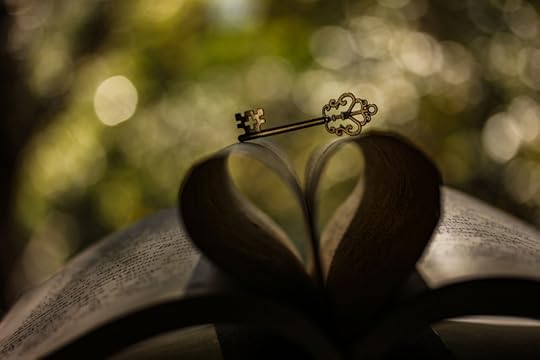Llewellyn Publications's Blog, page 28
September 30, 2019
Eco-Friendly Funerals for Pagans: Are They Possible?
Readers, please enjoy this guest blog post by Tomás Prower, author of La Santa Muerte, Queer Magic, and the new Morbid Magic.
 I often get questions regarding eco-friendly funerals, and after writing my new book Morbid Magic: Death Spirituality and Culture from Around the World revealing the many ways we humans have ritualistically and physically given our loved ones their final send-off into the afterlife, I’m not surprised that we’re starting to see a strong rise in bringing back the eco-friendly death traditions of old. Modern Pagans, particularly, are keen on not wanting to harm Mother Nature via today’s eco-unfriendly funeral industry. So, can it be done? Yes…but it takes some planning, and as a mortuary professional, here are some insider tips on things to think about.
I often get questions regarding eco-friendly funerals, and after writing my new book Morbid Magic: Death Spirituality and Culture from Around the World revealing the many ways we humans have ritualistically and physically given our loved ones their final send-off into the afterlife, I’m not surprised that we’re starting to see a strong rise in bringing back the eco-friendly death traditions of old. Modern Pagans, particularly, are keen on not wanting to harm Mother Nature via today’s eco-unfriendly funeral industry. So, can it be done? Yes…but it takes some planning, and as a mortuary professional, here are some insider tips on things to think about.
First, come to terms with the fact that you really only have two options: burial and cremation. The world has changed over the past centuries and millennia, and there are zoning and environmental laws in place that prevent you from leaving mom’s corpse in a hole in the ground in the backyard well as from setting dad’s cadaver out to sea on a longboat that’ll be shot with flaming arrows from the shore. Once you accept you have only two options, you can make a plan within those parameters.
Non-embalmed, casket-less burial is the best option. Many cultures throughout history, in some shape or form, had a strong belief in becoming one with nature again wherein our decomposing bodies nourish the earth. Most mortuaries don’t allow this. People don’t ask for it often, so it’s not readily available, and it directly impedes the major profit avenues of funeral homes: embalming and caskets. If embalmed, the ultra-carcinogenic cocktail of chemicals pumped into your cadaver will eventually seep out and leak into the ground, effectively making your grave a toxic superfund site. Even without embalming, though, most cemeteries don’t allow direct, natural burial without a casket because it’ll be more expensive for them to do groundskeeping, but if you do your research ahead of time, you’ll find select funeral homes and cemeteries where no-embalming, casket-less burials are allowed and can be arranged.
Cremation is notorious for the massive fossil fuels used to burn up the body and the toxic dental mercury that gets released into the atmosphere. Moreover, the “ashes” you get back are really just inorganic ground-up bones that survived the fire, and so they do nothing to nourish the earth if scattered or buried with tree seeds. However, they can possibly help re-build a coral reef, thus allowing your “ashes” to contribute positively to the environment, but, again, only select mortuaries provide this option.
Having an eco-friendly funeral as a Pagan can be done, but it takes a lot of pre-planning. Most (though not all) mortuaries won’t advertise or offer eco-friendly services because they aren’t profitable. So, start your research well before in your living years, and if you’re curious for more alternatives, check out Morbid Magic: Death Spirituality and Culture from Around the World for even more ideas.
Our thanks to Tomás for his guest post! For more from Tomás Prower, read his article, “Why We Fear Death.”
September 26, 2019
Freight Train Load of Frights: Why Are Railroads So Frequently Haunted?
Readers, please enjoy this guest blog post by Matthew L. Swayne, author of Haunted World War II and the new Haunted Rails.

Almost every town in the United States—and much of the world, for that matter—has two strips of steel secured in place by a plank of lumber that connects it to other communities. It’s the railroad. And every town with a railroad line, or an old train station, or a piece of railroad infrastructure (like a tunnel or a bridge) seems to be connected by another more supernatural line: railroad ghosts.
As I collected stories for my book, Haunted Rails, I wondered why these ghostly legends and paranormal accounts seem to attach themselves to what—to me, at least—is just an innocuous piece of industrial history. I continue to mull over that question: What makes railroads so haunted?
Here are a few of my best guesses.
First, the obvious connection is death. Railroading was—and still is—a dangerous, deadly business. My investigations into the history of railroad hauntings dug up incidents of train wrecks, explosions, fires, accidents, and even examples of workplace violence and murder that led to numerous deaths…and multiple ghost stories. While writing other books on university and music ghostlore, I found that ghost stories are often passed orally, from person to person, to preserve the memory of an individual or event, as well as to serve as a warning. It’s possible that railroad ghost stories do just that: they pay homage to a victim of a tragedy, for example, but they are also trying to tell you that, hey, maybe you want to avoid the same track (as it were) as this poor soul.
I also noticed in prior research that consciousness-raising activities boost supernatural experience. Music offers a good example. Music and rhythm are intimately embedded in spiritual practices and worship. Tales of ghosts, spirits, and other supernatural phenomena are unmistakably rampant in music history, from Robert Johnson’s deal with the devil to the ghosts of long-dead music stars haunting old music venues. You might think my theory would jump the track when it comes to railroad spirits, but I disagree. Railroads altered our consciousness by changing our notions of time and space. Journeys that once took days now took only hours. Loved ones who once lived faraway were now just a ticket away. Need more proof? Time zones became a thing because of the railroad.
Finally, maybe for some of the reasons discussed above, railroads have become mythologically linked to our own mortal journey. We talk about, “coming to the end of the line” and, “arriving at our final destination.” And, we can easily equate the passengers seated next to us on a train to our fellow passengers in this mere blip of time and space that we call life.
Whatever the reason for this freight train load of frights that railroading has inspired, I know that after Haunted Rails, I will never look down that railroad line that bends around the corner and disappears into the twilight of the morning, or the dusk of the evening, the same way again.
Our thanks to Matt for his guest post! For more from Matthew L. Swayne, read his article, “The Top 5 Weirdest Haunted Railroad Stories.”
September 25, 2019
Practical Techniques for Better Readings
Marcus Katz and Tali Goodwin
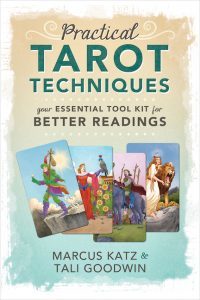
Something that many people struggle with is not learning what the individual cards mean but being able to create a message from the cards in a reading that makes sense. A card by itself is easy enough to learn. Put three or more cards on the table and some people have trouble making it flow. Practical Tarot Techniques is filled with very practical skills that will help you become a better reader by helping you interpret and communicate what you interpret clearly. Here’s just one of the many techniques you will find in Practical Tarot Techniques.
There is a skill that is important to learn—that of bridging. Bridging can be defined as visually and/or intuitively connecting the symbols of the cards in a way that makes sense in the context of the reading.
When experienced tarot readers look at cards and symbols, they are able to make “bridges” of interpretation between the symbols. For example, they might tell the querent, “In this card (the Two of Swords) and in this one (Justice), we see a blindfold. The sword held by Justice tells me that the decision in your legal case will be reached soon and will be fair to you, even though you cannot see it at the moment.” For some, this skill of bridging is a natural ability; for others, it can be gained from experience. Either way, it can be taught, and learnt, as a specific skill that will rapidly build your tarot-reading confidence.
Exercise: Bridging
In this example, we will use the Six of Swords and the Star. Here’s what we might say about bridging these two cards:
6 of Swords and the Star
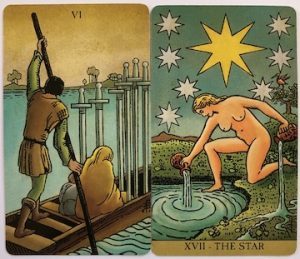
The Six of Swords shows a daytime background, while the Star is visible only at night. It would be great to be on a journey, as in the Six of Swords, with the Star card ahead like a guiding beacon. There is water in both cards, although it is being controlled more in the Star card. I get the general feeling that both cards have something to do with flow.
Now take two cards from your deck. Make a note in your journal or say out loud what you can see that bridges these cards. In other words, what happens in your mind when you see these two images together? Our minds are automatic sense- makers (and sense-breakers) in the processes we call language and learning. Images and symbols are part of that—in fact, you are doing it now to make sense of these weird black squiggle shapes on the page.
You can use comparisons, contrasts, themes, distinct symbols, colour, shape, form, numbers, or anything else that occurs to you. The important thing is not to try and interpret the cards, nor make sense of them individually. This is not what good tarot readers do at all, although it is the way tarot tends to be taught, unfortunately—one card at a time.
Don’t reject any thought that arises, whether it is a statement of fact or an intuitive impression—especially things that don’t appear to make sense. Have fun and let your consciousness flow until you can’t say or write anything more. The goal is to face the cards in a spirit of enquiry, so if you feel as if you are working too hard or having trouble, simply shuffle the deck and choose a couple of different cards.
September 11, 2019
Learn the Language of Tarot
The Language of Tarot by Jeannie Reed
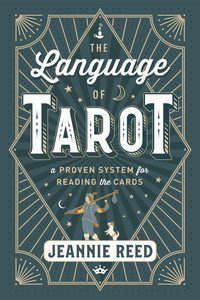
The Language of Tarot is in some ways quite revolutionary. The author, Jeanne Reed, is not afraid to make clear, bold statements, both in her tarot readings and in her way of teaching tarot. These days, many authors in their attempt to acknowledge that there is no one “right” way to use tarot don’t say anything too definitively. In this way, Reed is a breath of fresh air.
She is also revolutionary in saying that the cards are a language that can be read easily and clearly. For her, it isn’t about what this card seems to be saying or what a reading could or might mean. For her, if we ask a question, we will get an answer. It is our job as readers to be able to read that answer.
Whether you agree with her or not, her book will definitely give you something to think about. At worst, it will solidify your own opinions. At best, it will help you become a more effective reader.
Here’s a taste of Reed, being clear and practical about her methods while respecting other people’s experiences.
Excerpt:
Which leads me here to tell you that anything you find in this book is not my opinion. It is my experience, and there’s a big difference. There’s also nothing “true or false” about what I have to say here. If I learn something from more than one client, it starts to be fact to me. Sure, other books may contradict what I have to say here. That’s fine! But if somebody remarks that some of my statements are “untrue,” that can’t be right, because everything I’m telling you here is the outgrowth of my own personal and professional experience.
For an example, if I know my readings can be accurate for people five thousand miles away, who I cannot see, who I’ve never met and who cannot interact physically with the cards, then I have to figure that my clients, at least, don’t need to actually touch the cards to get accurate readings, right? And since some of my students are having the same experience, this thing can’t just be about physical touch. Instead, it has to be about the reader connecting with the client on some kind of deep level that the tarot images are able to trigger.
I know there are those out there who believe there is a connection that is in fact physical, that physical energy is transferred from one to another through the cards. I respect this. Basically, I respect anything that works! So if this philosophy works for those readers, I can’t argue with it. I just know from my own experience that when I work, touch isn’t necessary. I know that our connection is huge and invisible and intangible
September 10, 2019
Halloween Costume Ideas for Each Sign of the Zodiac
Readers, please enjoy this guest blog post by Kristy Robinett, author of several books, including It’s a Wonderful Afterlife, Tails from the Afterlife, and the new Born Under a Good Sign.
Halloween is the perfect time to embrace the strengths of your sun sign. Here are some fun costume suggestions to show off your astrological personality.
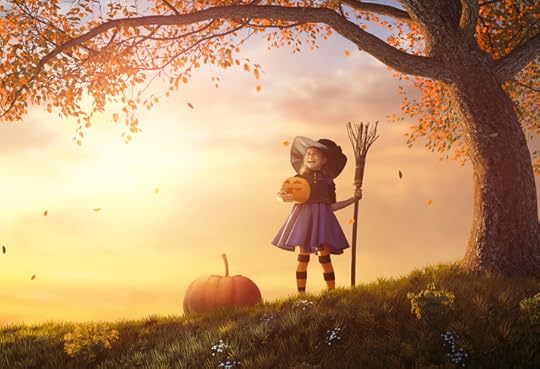
Aries: Aries are brave, loyal, and natural leaders, which means that a superhero costume is a fabulous choice for Halloween.
Taurus: Taurus loves all things decadent, including food, so dressing up as a chef or in another food-themed costume a five-star decision.
Gemini: Embrace the two sides of the twin Gemini by showcasing a costume such as Harley Quinn, the Joker, or the singer Sia.
Cancer: Motherly and wanting to make sure everyone else is having a fun time, Cancer would do best to embrace a comfortable costume, such as a cat or unicorn onesie pajamas.
Leo: The Leo loves to show off any way that they can. The costume, no matter how plain in description, should be bold, beautiful, and include a crown and extra sparkles.
Virgo: Always practical, the Virgo‘s costume should be simple and uncomplicated. Good choices include a nurse or doctor, a hippie, a police officer, or Waldo of Where’s Waldo? fame.
Libra: The Libra loves to be loved and to love. Libra’s best costume is anything dreamy, such as a sparkling fairy, a genie, or even a bride or groom.
Scorpio: Dark, sexy, and mysterious, the Scorpio’s Halloween costumes should embrace just those qualities. A vampire, a witch, or a rock star would be just perfect.
Sagittarius: Creative and social, the Sagittarius will look stunning as an archer or by donning Medieval garb (flower crown and/or sword required).
Capricorn: Budget-friendly Capricorns refuse to break the bank on a costume. They’re best to build a costume from a t-shirt and a set of ears and tail, or by going to the thrift store to find a something that can be used and re-used throughout the ensuing years—looking splendid every time.
Aquarius: Kindhearted, intelligent, and generous, Aquarians rarely want to draw attention to themselves, but Halloween is the exception. An Aquarian will love the elaborate special effects makeup of a zombie or Day of the Dead skeleton.
Pisces: Artsy and creative, the Pisces would look amazing embracing their water sign by becoming a sparkling and sexy mermaid/merman, Aquaman/Mera, or dressing up as Bob Ross, happy trees and all.
Looking for more from Kristy Robinett or about the strengths of your Sun Sign? Order Born Under a Good Sign today!
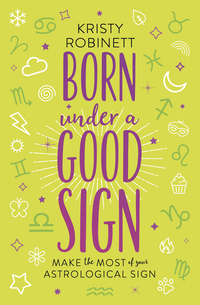
Happy Ostara to Our Southern Hemisphere Friends!
Here in the northern hemisphere, Mabon, the Autumn Equinox, is almost upon us, but for our southern hemisphere friends, it is time for the Spring Equinox/Ostara. To help you celebrate, we’ve rounded up our best rituals, spells, books, and more!
An Ostara Sabbat Ritual for One: Celebrate Ostara with a ritual to welcome the light and leave the dark behind.
Brighten Your Ostara by Bringing Balance to Your Life: Use these ideas to rejuvenate and balance your emotions, finding new joy in the process.
Ostara: A Time to Recreate Yourself: Ostara, that magical time of renewal and balance, is just around the corner. Use this magical time for personal recreation, and to become the person you truly desire to be.
Ostara Spells: Browse our spells to find your perfect Ostara ritual or incantation.
Books:
Ostara
Llewellyn’s 2020 Sabbats Almanac
Rituals of Celebration
Supermarket Sabbats
Sabbats
The Witch’s Wheel of the Year
September 9, 2019
Three Types of Spirits You Need to Know (And How to Meet Them)
Readers, please enjoy this guest blog post by Mallorie Vaudoise, author of Honoring Your Ancestors.
 As an animist, I experience the world as alive with spirits. I see the intelligence of animals, plants, and stars.
As an animist, I experience the world as alive with spirits. I see the intelligence of animals, plants, and stars.
Because the world is alive with spirits, we don’t need to go out looking for them. There are spirits all around us. For most of us, having a good relationship with just three types of spirits is necessary and sufficient for a healthy existence in the animist ecosystem.
1. Your Own Spirit.
Hey, we’re spirits, too—spirits who chose to experience human incarnation. The closer in touch you are with your own spirit, the more of those vital experiences you get to have in this lifetime.
Exercise: Separate Ego from Spirit
Pick a desire you fantasize about. It can be a job you want, a city you want to move to, or a person you have a crush on. Take a moment to breathe and feel this desire in your body. Now, make a list of all the fantasies you have about this desire.
Once you have completed your list of fantasies, read through them one by one. Which of these fantasies are driven by ego? Fantasies driven by ego reaffirm ideas that you have about who you are (or would like to be). Fantasies driven by your own spirit break free from societal norms and often emphasize connecting with others or sharing your gifts with the world at large.
Once you understand which fantasies come from where, you’ll have a better chance of manifesting your true desires.
2. Your Ancestors
We had to get here somehow. Our ancestors paved the road for us to arrive in the material world. And, even though they’re not physically here anymore, we still feel them in our language, food, music, and stories.
Exercise: Pray to Your Family Tree
Make a list of your ancestors. Try to list out as many of your direct blood ancestors as possible. You can also include other types of ancestors; if you were adopted, you can include your adoptive ancestors. If you had other caregivers as a child who weren’t blood relations, include them, too. This is your prayer practice, so don’t leave anyone out that you’ll miss and don’t include anyone you don’t want to.
Read through the list, and after each name, pray a simple blessing. (“Rest in peace,” will do.) After you’ve read through the entire list, pray a slightly longer blessing. I like the Requiem Prayer for this because most of my ancestors were Catholic. But, you can use a different prayer, or make up your own. (I include prayers from several traditions in my book, Honoring Your Ancestors: A Guide to Ancestral Veneration.)
Praying for your ancestors opens you up to receiving their guidance and blessing.
3. Spirits of Place
And where are we, exactly? No one can really tell. But every place has a spirit. There are the glamorous witchy ones, like crossroads and graveyards. Then there are the unsung others: apartments, gyms, dive bars, etc. If honoring your ancestors renders your practice in glorious technicolor, then honoring spirits of place kicks it up a notch with 3D glasses.
Exercise: Smooth Transitions
Transitions are hard—both the big life transitions and the small transitions from place to place. Pick a day to add intentionality to those small transitions. Make an apotropaic gesture (like the mano fico: make a fist and stick your thumb between your middle and pointer fingers) every time you move through a doorway or cross a street.
How does the practice of transitioning with intention affect your consciousness?
Our thanks to Mallorie for her guest post! For more from Mallorie Vaudoise, read her article, “4 Simple Steps to Commune with Your Ancestors.”
September 2, 2019
Where Are Your Unicorns?
Readers, please enjoy this guest blog post by Angela A. Wix, author of Llewellyn’s Little Book of Unicorns.
 “You like unicorns a lot,” my niece exclaimed recently, handing me the unicorn bracelet she’d made especially for me. “Like, a lot,” she asserted, just to make sure I got the point. I smiled, taking the colorful hoop from her and pulling it onto my wrist.
“You like unicorns a lot,” my niece exclaimed recently, handing me the unicorn bracelet she’d made especially for me. “Like, a lot,” she asserted, just to make sure I got the point. I smiled, taking the colorful hoop from her and pulling it onto my wrist.
“I sure do!”
There’s no denying it now. I’m officially the unicorn lady. I used to resist this label, scoffing away my own interest and convincing myself it didn’t matter. But when you are something, often it oozes out of you anyway. No matter how you try, people notice.
The truth is that once I embraced this part of myself, I really started learning from it. From unicorns I learned more about what it means to be courageous and fierce, while also remaining gentle and compassionate. They’re a symbol for standing out in all your uniqueness and being loved as your authentic self, and soon I took that to heart.
I took a magnifying glass to the energy of unicorns and found them in self-reflection and synchronicity, the use of imagination, things I find beautiful, meaningful dreams, passions, personal quirks, playfulness, and more. They were in sticker books, music concerts, roses in the front yard, tear-streaked laughter with a friend, birds swooping in my path, dances in the living room with my dog, and the slow pace of a rocking chair on my front porch. If you’re in a moment where you find yourself thinking, “This is what makes life worth living,” or, “I need more of this in my life,” then, congratulations, you’ve found a unicorn. They hide among the places where we find our personal power and all the things that make us shine from the inside out.
I took back my sparkle and gained a whole new perspective on life. So I ask you: What are you hiding about yourself that’s asking to come alive and be expressed? Where is the glitter in your life? Where are your unicorns? And most important of all, are you ready to go out and find them?
Our thanks to Angela for her guest post! For more from Angela A. Wix, read her article “How to Find Your Sparkle: Five Unicorn-Inspired Tips.”
August 26, 2019
Messages Come and Go…It’s Okay
Readers, please enjoy this guest blog post by Roland Comtois, author of Signs of Spirit.
 Messages from our loved ones come and go—or at least that’s what we think. We feel them. We hear them. We see them clearly in our dreams. Then, everything changes. There are moments when the communication between us gets a little shaky, and this may be followed by silence, no communication. We believe the connection has disappeared and they are no longer able to reach our realm. We become confused, and often it rattles us to our core. But, there is a reason for all of this.
Messages from our loved ones come and go—or at least that’s what we think. We feel them. We hear them. We see them clearly in our dreams. Then, everything changes. There are moments when the communication between us gets a little shaky, and this may be followed by silence, no communication. We believe the connection has disappeared and they are no longer able to reach our realm. We become confused, and often it rattles us to our core. But, there is a reason for all of this.
My mother, Theresa, passed some 7 years ago. I don’t always hear her voice anymore. I do not see her as much as used to, nor does she visit my dreams as routinely as she did shortly after she passed away.
As time goes on, there is a deep and profound evolution in the relationship between us and our departed loved one. That’s right…I said it…relationship. Relationships change. They just do.
I realized that when my mother was alive, I didn’t see her every day, and that was okay. I didn’t even speak to her every night, but I thought of her all the time. Our relationship evolved over the years, as it does when our loved one has passed. I always know that she is there. I feel her right now as I type words into my blog. We had, and still have. an undeniable connection—relationship—and love for each other.
Love, as I have stated many times before, is by far the greatest communicator between two people. Sons and daughters, friends and best friends, fathers and grandfathers, all have a common energetic thread. It is the essence of love that allows the communication to be continued, even when we don’t feel it.
Give this a try for a moment. Ready? Close your eyes, still your mind; think of someone that has passed away and hold the feeling of peace. I would say just experience the knowing…the love…the oneness that exists between you and your departed loved one. You can do this. Keep doing this exercise until you befriend the silent and still mind—a peaceful place. The still mind is the connector to the energy of love, the memories of your loved ones, and the enhanced communications with those that have passed. The overall goal is that, after a fair amount of practice, the still mind becomes comfortable and easy to attain. It is the best pathway for spiritual communication.
Three things to remember:
Getting messages is not an all-night drive through. When the messages come. Hold on to them. Sit with them and remember them.
Practice peace and patience. Remember to close your eyes and find that peaceful place within.
Be in the knowing. Knowing that my mom is there beats any sign (such as a butterfly or dragonfly or blue jay soaring by). The knowing is constant and comforting all at the same time.
When we live in the knowing and experience the still mind, all that we need, including messages from our loved ones, is within the evolution of our love for each other.
Our thanks to Roland for his guest post! For more from Roland Comtois, read his article “Signs of Spirit: The Connection Remains.”
August 21, 2019
Pathworking the Tarot

Pathwork is deep work. You want to use the tarot to improve yourself, to explore your spiritual path, and to get to know the cards better but feel stuck, maybe it’s time to take your study to the next level. Maybe it’s time to really dig in. To give you a good understanding of what this work is like, below is a lengthy excerpt that gives an example of how Leeza Robertson approaches the Minors.
You can find out more HERE.
The Sevens
The Sevens in many respects are ambiguous, with each of these cards seeming to have an ‘either or’ type meaning or representation. Just when you think you have a seven sorted it out, it throws up another possibility. I guess this is why the Sevens in numerology are associated with lessons and learning. It could even be said that there is not a lot of action in these cards. We are either distracted and taking a stand, but not actually moving, daydreaming about what will be when our manifestation ripens, or worrying about what we have, don’t have, and what we think we should have. So what lesson have you come here to learn? Have you wandered into the Sevens to learn how to set boundaries, or have you come here to learn how to refine your feeling and decision-making? Perhaps you have to learn patience. There is no doubt that lessons are abound within the Sevens, be they emotional, mental, spiritual or physical.
The Seven of Swords is the first of our ambiguous cards. Is this the card about stealing or reclaiming? Is the character stealing swords or taking back what is theirs? Are there any indicators in the card itself to even let us know what the truth is about what we are seeing? Considering that the swords are a mental/mind card, could it be the mind clearing out thoughts and beliefs and ideas that are no longer needed? Maybe it’s your mind reclaiming boundaries around thoughts ideas and beliefs. This is where the other cards around your Seven of Swords in a reading will help you decide whether something is being lost or something is being retrieved. So what’s up with the Swords that get left behind? One of the very interesting elements of this card is that there are things that get left behind, but what are those things, and how do we know what to take, reclaim and what to leave behind? Could it be that we are trying to gather elements of our lost goals or dreams? The Seven of Swords is connected to both the Moon and the High Priestess which also adds to the mysterious duality of this card. Nothing is quite as it seems, and maybe that is the lesson. Don’t trust everything you see or think at this time, because not all of it is illuminated. There may be important things hidden and left out of the light, in order for you to make good life affirming decisions.
The Seven of Wands is our second ambiguous card, because let’s face it, can you tell if the person in this card is being attacked or gathering support? Just like the Seven of Swords, the Seven of Wands really is up for personal interpretation. Your emotional triggers will dictate how you interpret the image on this card. You will either see it as supportive or combative. So which is it? Do any of the cards around it in a spread or reading make it’s meaning even clearer or do they just confuse the matter even more? To be fair, there could be both elements playing out in this card at the same time, for when one takes a personal stand, and rallies others to support that stand, there will always be those who are in opposition. In other words, you can’t please everyone. You may very well be doing what is right by your personal definition, but that doesn’t mean everyone around you will see it that way. In many respects, we see elements of the strength card here in the Seven of Wands, maybe due to its connection to Leo. It takes courage and strength in order to define one’s boundaries, even if at times we can’t tell if we are defending them or reclaiming them.
The Seven of Cups looks like a hoarder’s delight with cups filled to the brim with God only knows what. There seems no rhyme or reason or logic in order to anything that we find stuffed within the Seven of Cups. Maybe they are filled with fantasies and images, fresh from the imagination, offering up possibilities and opportunities. Perhaps they are nothing more then hoarded collectibles gathering dust and serving no real purpose. Maybe they are treasured memories from important times, important places, and important people. Each of these cups could be anchoring you to a past that feels more real than the current moment you now find yourself. Remember that the decision you made back in the Sixes has influenced what has happened here in the Sevens. If you were able to let go of the past and the nostalgic hook that was wrapped around the Six of Cups, then what you see before you now could be a possibility for a new future, a new journey and a new experience. If, however, you have clung to those past experiences and those past memories and carried them with you into this moment, then the Seventh Cup is you just making more space to fill with old memories. None of the Cups serve a purpose, except to fulfill fantasies of a time that no longer exists. So, which is it? Are you clinging to a time, space and feeling that no longer exists, or are you daydreaming of the possibilities of this new and exciting journey?
The Seven of Pentacles is often depicted in a garden setting with a tree housing the pentacles. However, are these pentacles ripe and ready for the taking or are they still unattainable and offering only a hint of something that you must wait to receive? I have often heard this card described as the card of harvest, yet we do not actually see anyone taking the pentacles from where they are growing. This often leads me to believe that the fruit of our labor is not yet ready to be harvested at all. Instead, it teases and taunts us with expectation and possible potential. You could think of this card as a window into your own personal garden of manifestation, where you can check how your dreams, goals, and hopes are growing. You can see if there is work to be done in your garden based on the cards that surround the Seven of Pentacles in a reading or a spread. Have you neglected your manifestation garden? Have weeds overtaken all that you were growing and are now strangling your creations,or does your garden thrive and prosper? Check the other cards around Seven of Pentacles to see whether or not you are good at this gardening thing, or whether this is a skill you are going to have to sharpen.
Path W ork
Intentional
You have made it through the change of the Fives and reset your commitment to your goal or dream in the Sixes.Now it’s time for a little course correction. The Sevens of the Minor Arcana are linked to the Chariot in the Major Arcana, and even though it doesn’t always look like there is a lot of movement in these cards, there really are some very firm decisions about direction being made. As you learned with the Chariot, movement is best served when it is done deliberately with a firm, conscious intention behind it. One of these four cards holds the key to your next move, and just like the watery undertows of the Chariot, you are going to have to feel your way through your choice. Remove the four Sevens from you deck and place them face down in front of you. Give them a little shuffle, just enough so you don’t know where each one is. Then pick each card up one at time. Do not look at it, rather hold it to your heart chakra. Take a couple of nice deep breaths and see if there is a connection there. If not, just place it to your left and keep going until you find the card that you ‘feel’ is in sync with the direction you know you need to go. Once you have selected your card, and yes you have to chose one and one only, place it somewhere you can see it and leave it there for a couple of days. Pick it up at least a couple of during the day and reconnect with it on a heart level. You may close your eyes as you make your heart connection and see if the card itself has any messages for you. You can also journal about what you see on the card itself, such as the colors, the mood, the environment and anything else that catches your eye and peeks your interest. But most importantly, move in the direction you card suggests.
Intuitive
Go ahead and grab the four Sevens out of your deck and lay them face up in front of you. Just take your time and really look at the pictures. Forget about the meanings for a minute, and just let your eyes room over the four cards, letting your vision register the colors, shapes or anything that just catches their attention. As you roam your eyes over the cards, write down the things that pop out at you. They don’t have to be in any sort of order, or in any detail, just jot them down. I am sometimes taken in by the lazy, yet longing expression, that is often drawn on the face of the person in the Seven of Pentacles cards.My eyes focus on the Seven of Cups trying to make out all the things that are stuffed inside them. What is currently catching your eye and pulling at you? The moment you find yourself seeking or deliberately searching for something in the cards, stop. Check over your notes and have a look at what you have written. What is the one thing in your notes that stands out the most and which card is it on? Zoom in on it, pick up the corresponding card, and examine it further. Literally talk yourself through the item, color or thing that stood out the most to you. Describe it, name it, claim it and give it a narrative that is relevant to your current goal or dream. This exercise allows you to connect with the card on its terms and does not rely on an already predetermined meaning. Take you time with this exercise and just allow the card to speak to you both visually and intuitively.
Wandering
The Sevens are linked to movement as well as lessons. Have you ever wandered your way through a lesson or learned something while engaging your body? This is known as kinestheticlearning and is a very effective way to remember details and absorb data. This form of teaching is often used with children and adults who have ADHD, as it grounds the information in a way that the brain recognizers. It is also a very cool hypnosis tool. The idea is simple in that you associate a physical movement with something you are trying to learn. This could be remembering an answer to a math problem by pulling your left ear or tapping the end of your nose to recall a specific task on your to-do-list. Funny enough, we all learn some form of information this way. Before you do anything, you need to decide what piece of information you want to engage with in this physical aspect. Is it a reminder to set boundaries with the Seven of Wands? Is it to check in and see what you feel you have left behind in the Seven of Swords? Is it a reminder to stop daydreaming and get back to work with the Seven of Cups, or do you want to learn how to know when your manifestation garden is ripe and ready to harvest with the Seven of Pentacles? The best part about this exercise is you can make it as fun as you want it to be. Get into the same pose as the figures on your card, as you affirm your lesson. For example, stand like the figure in the Seven of Wands, but beat your chest as you say, “I make no apologizes for setting clear boundaries to protect myself and all that I am creating.” If you do yoga this might feel familiar to you, as often times you are asked to affirm or repeat mantras as you hold specific poses. Now go pick your card, get your body in on the act, and have as much fun as possible learning how to activate, engage and interact with the lessons of the Sevens.
Llewellyn Publications's Blog
- Llewellyn Publications's profile
- 241 followers





